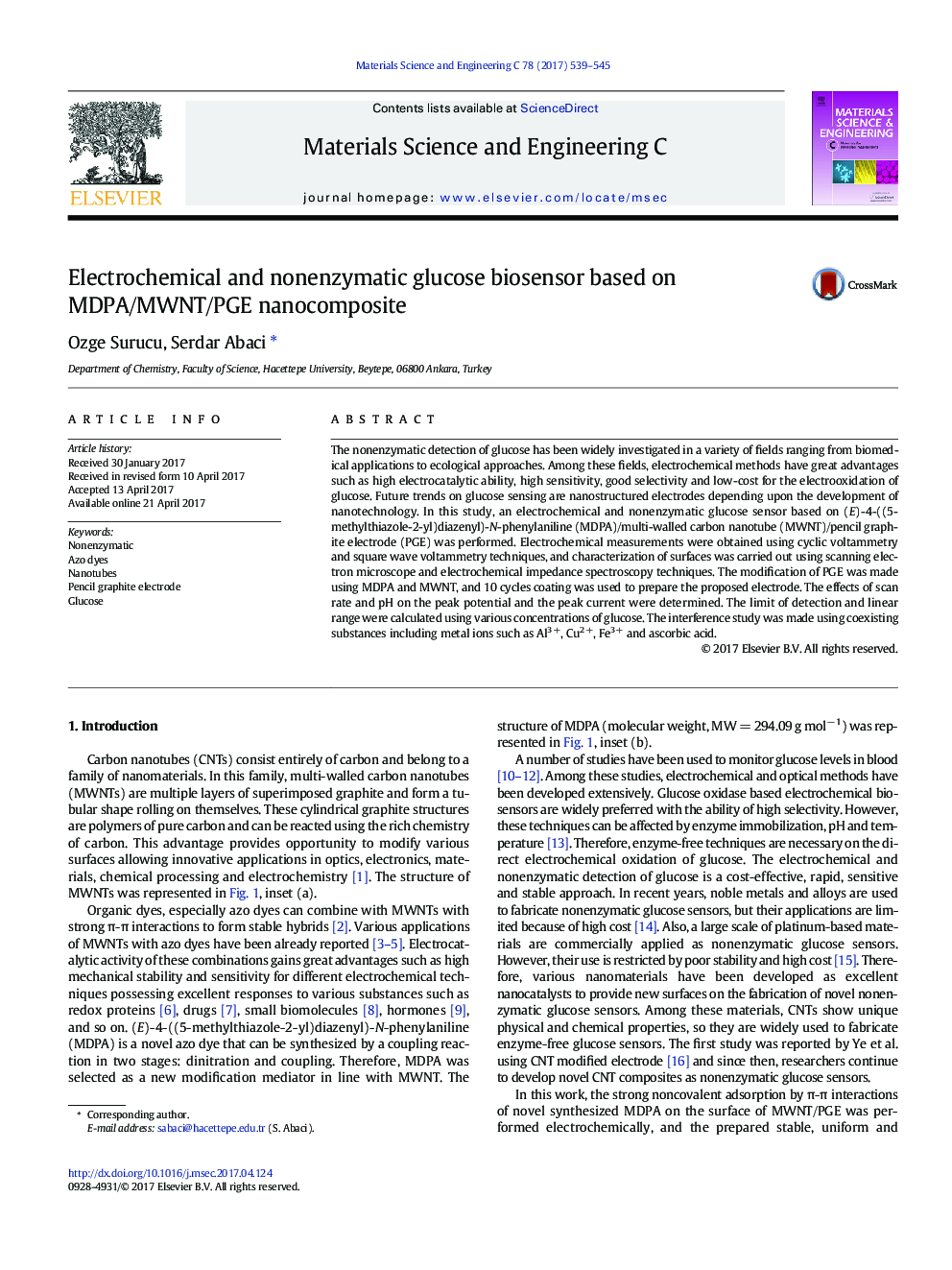| کد مقاله | کد نشریه | سال انتشار | مقاله انگلیسی | نسخه تمام متن |
|---|---|---|---|---|
| 5434446 | 1509143 | 2017 | 7 صفحه PDF | دانلود رایگان |

- (E)-4-((5-methylthiazole-2-yl)diazenyl)-N-phenylaniline (MDPA) was a new azo dye.
- Electrochemical and nonenzymatic glucose sensor was obtained.
- The electrooxidation of glucose was determined on proposed composite.
- The effects of scan rate and pH were determined.
- Interference studies were performed to determine the selectivity.
The nonenzymatic detection of glucose has been widely investigated in a variety of fields ranging from biomedical applications to ecological approaches. Among these fields, electrochemical methods have great advantages such as high electrocatalytic ability, high sensitivity, good selectivity and low-cost for the electrooxidation of glucose. Future trends on glucose sensing are nanostructured electrodes depending upon the development of nanotechnology. In this study, an electrochemical and nonenzymatic glucose sensor based on (E)-4-((5-methylthiazole-2-yl)diazenyl)-N-phenylaniline (MDPA)/multi-walled carbon nanotube (MWNT)/pencil graphite electrode (PGE) was performed. Electrochemical measurements were obtained using cyclic voltammetry and square wave voltammetry techniques, and characterization of surfaces was carried out using scanning electron microscope and electrochemical impedance spectroscopy techniques. The modification of PGE was made using MDPA and MWNT, and 10 cycles coating was used to prepare the proposed electrode. The effects of scan rate and pH on the peak potential and the peak current were determined. The limit of detection and linear range were calculated using various concentrations of glucose. The interference study was made using coexisting substances including metal ions such as Al3Â +, Cu2Â +, Fe3Â + and ascorbic acid.
205
Journal: Materials Science and Engineering: C - Volume 78, 1 September 2017, Pages 539-545